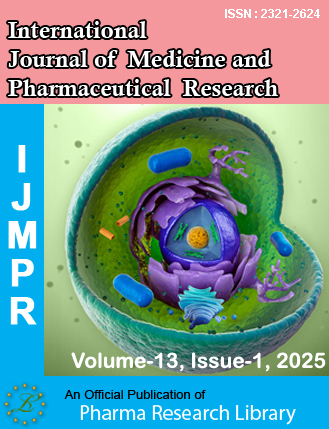Evaluation of Hepatoprotective and Anti-Oxidant Activity of Synthetic Piperonal Dervatives
DOI:
https://doi.org/10.30904/j.ijmpr.2025.4834Keywords:
Piperonal derivatives, Hepatoprotective activity, Antioxidant activity, Carbon tetrachloride (CCl₄), Oxidative stress, Glutathione (GSH), Catalase, Malondialdehyde (MDA), Silymarin, Liver histopathologyAbstract
The present study was undertaken to evaluate the hepatoprotective and antioxidant activity of newly synthesized piperonal derivatives. Three test compounds (Test compound 1, 2, and 3) were assessed against carbon tetrachloride (CCl₄)-induced hepatotoxicity in rats. Oral administration of the derivatives at 100 mg/kg significantly (p < 0.01) reduced elevated serum markers of hepatic damage, including SGOT, SGPT, ALP, total and direct bilirubin, as well as malondialdehyde (MDA). Concurrently, treatment restored protective biochemical parameters such as total protein, glutathione (GSH), and catalase. Histopathological analysis supported the biochemical findings, showing regeneration of hepatocytes and preservation of liver architecture, closely comparable to that observed with the standard hepatoprotective drug, silymarin. Among the derivatives, Test compound 3 demonstrated superior activity, likely due to the presence of an amine substituent contributing to its enhanced pharmacological profile. Overall, the findings indicate that synthetic piperonal derivatives, particularly Test compound 3, exhibit strong antioxidant and hepatoprotective potential and may serve as promising candidates for further therapeutic development.
Downloads
Published
Issue
Section
License
Copyright (c) 2025 Author

This work is licensed under a Creative Commons Attribution-NonCommercial 4.0 International License.

